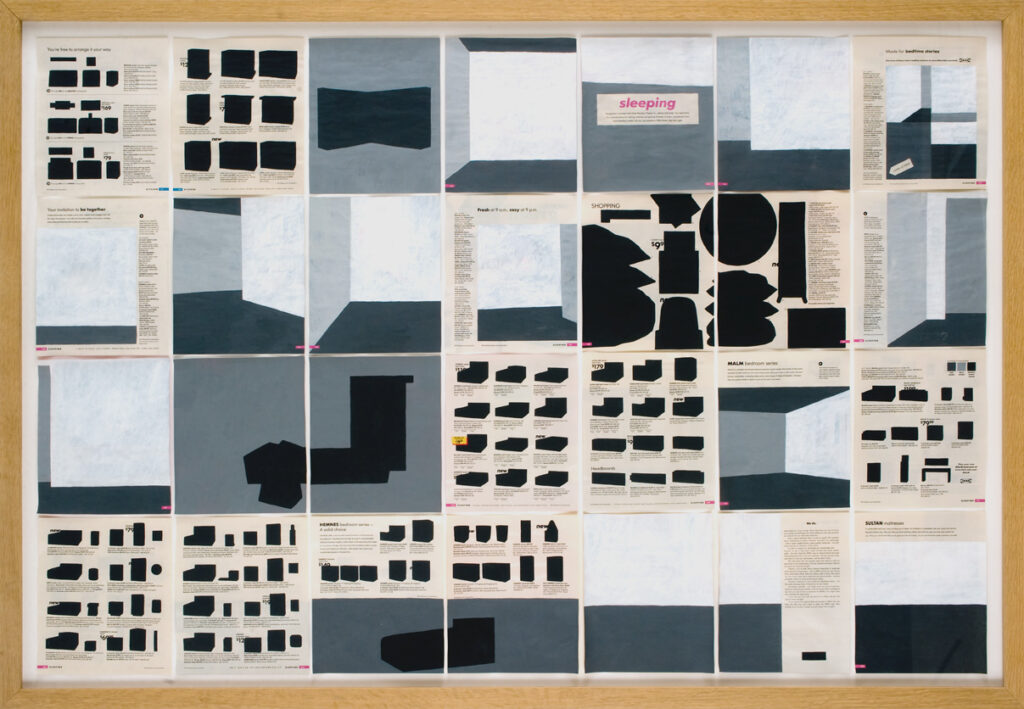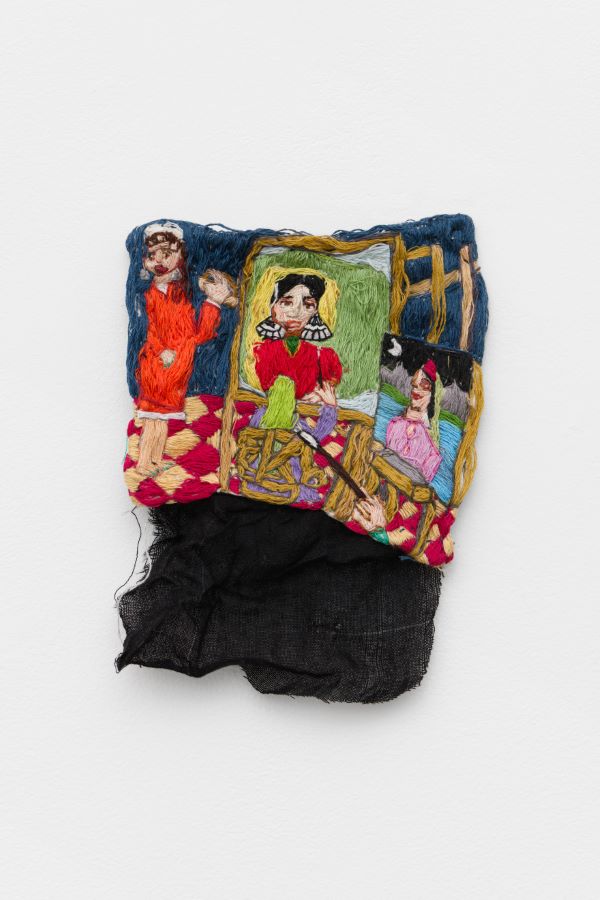Intérieurs
BERGER&BERGER
KATHARINA BOSSE
BERTRAND DEZOTEUX
TIZIANA LA MELIA
JOCHEN GERNER
JAGDEEP RAINA
STEPHANIE SAADDÉ
Many novels and essays are dedicated to inhabited places, such as Georges Perec’s famous espèces d’espace, Virginia Woolf’s Une chambre à soi, Joris-Karl Huysmans’s A rebours, as well as Mona Chollet’s Chez soi, Thomas Clerc’s Intérieur, Christophe Boltanksi’s La Cache, and more recently Emmanuele Coccia’s Philosophie de la maison. As Jean-Luc joy writes in the postface to Pérec’s book: “ The space of our life is neither continuous, nor infinite, nor homogeneous, nor isotropic. But do we know precisely where it breaks up, where it curves, where it disconnects and where it reunites? Fissures, hiatuses and points of friction can be felt sometimes, with the vague impression that it is getting stuck somewhere, or is bursting or colliding…”
Tiziana La Melia will present paintings whose shapes are inspired by the house, a square topped by a triangle to symbolize the roof. As she explains, her family came from Italy and settled in Canada. Arriving in a foreign country, the need to find a place where to live and put down roots was vital. For Tiziana La Melia, this need was also tinged with an ambivalent feeling. The house can be a refuge, but can also become the place of female confinement. She remembers her grandmother in Italy, obliged to assume her role as a “housewife”. When the house becomes the only center of a woman, whom society describes as a “housewife”.
Dolores Hayden has dedicated a book to “ the first American women who have identified the economic exploitation of female domestic work by men as being at the root of inequality between the sexes*.
Stéphanie Saadé will present House Plan. Here the artist, with sand paper has removed a trace of paint in each of the rooms, which make up her apartment. Once used, the sandpaper forms the plan of her flat. Paradoxically with her attempt to reproduce her place of living by cutting this abrasive piece of paper, Stéphanie Saadé speaks to us of exile and displacement.
To come and touch, to rub the walls in order to smell the space, understand it, listen to its history, but also leave a trace before a new departure. As Emmanuele Coccia explains in his book “la Philosophie de la maison”, we occupy places that have been inhabited by people we have not known, and in turn, we will leave these spaces to other newcomers.
Jochen Gerner will present the pages of an Ikea catalogue he has completely recovered, removing every furniture and objects and only leaving visible the architecture of the room.
The catalogue is organized by room: Living room, Dining-room, Working-room, Sleeping-room… each moment of the day and night corresponds to a room. We are invited to stroll in our homes according to the time of the day. Does human being shape space, or does space shape human being?
In his book Espèce d’espaces, Georges Perec proposes, “ a division based not on circadian rhythms but on heptadian ones: this would give us apartments of seven rooms, respectively called: Monroom, tuesroom, wenesroom, thursroom, friroom and sunroom.”
Bertrand Dezoteux’s En attendant Mars is modeled on Mars 500, a Russian experimental capsular life simulation program launched in 2010. The aim was to reproduce, for 520 days, – the duration of a round-trip flight to Mars- the life conditions of a crew in a strangely wainscoted tight space, in order to measure the physical and psychological repercussions of such a flight. En attendant Mars re-enacts fragments of this simulated spatial life.
Berger&Berger will present a selection of advertisements from French, German and Italian Architecture magazines, in the sixties to the eighties. They examine the History of the presence of advertisements in architecture magazines and the place of woman, of the objectivized body and of the picture of the architect in contemporary advertising. These images build the idea of an ideal house.
Katharina Bosse will present a photograph entitled Dean Martin Room.Is it an advert for an interior, a sofa or a lamp? None of that. In the nineties, the artist made a series of photographs entitled “Realms of Signs, Realms of Senses” in which she photographed rooms in hotels where no one under 18 was allowed. These places offer various surroundings, from a prison to a boudoir or an operating room. So architecture becomes an object of fantasy.
Jagdeep Raina, a Canadian artist of Kashmir origin, mainly does embroidery. A way, for him, to reconnect with his origins. He takes up a female practice intimately linked to the interior of home. But here, there is no longer a home. Since 1947 Kashmir has been quartered in three countries: India, Pakistan and China. In his works, he creates imageries, which allows a phantasmagorical recovery of this place through transmission belief, creation and love.
*La grande révolution domestique, une histoire de l’architecture féministe” by Dolores Hayden, published in France in 2023, ((1982 in the United States).


Jochen Gerner
Sleeping, 2008
series Home
acrylic on printed paper
100 x 144 cm (framed)


Tiziana La Melia
Country Mouse, City Mouse – Love Wisperia, 2020
Oil, pastel and stained glass on wood panel
76 x 61 cm

Stéphanie Saadé
House Plan, 2023
sandpaper, adhesive, cardboard
32 x 50 cm (framed)


Bertrand Dezoteux
En attendant Mars, 2017
14 minutes

Jagdeep Raina
Ces chiffres, 2023
Embroidery on muslin
20,5 x 15 cm

Katharina Bosse
Dean Martin Room, 1999
C-Print
100 x 75 cm
